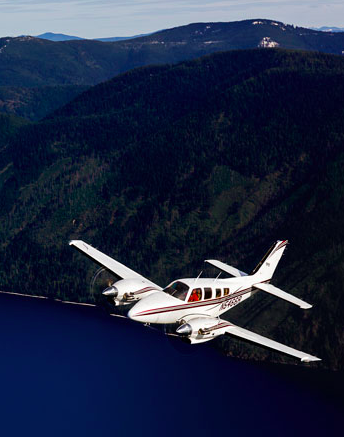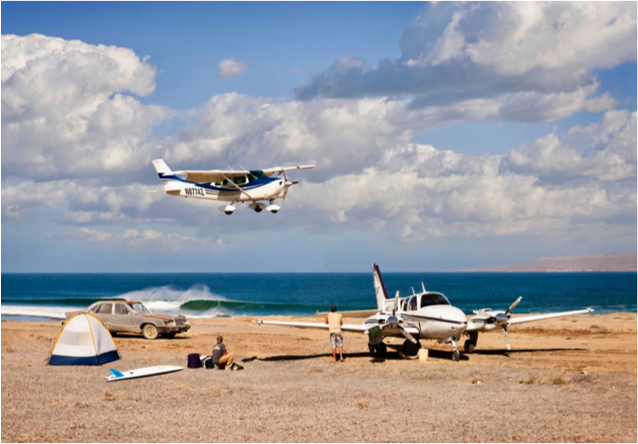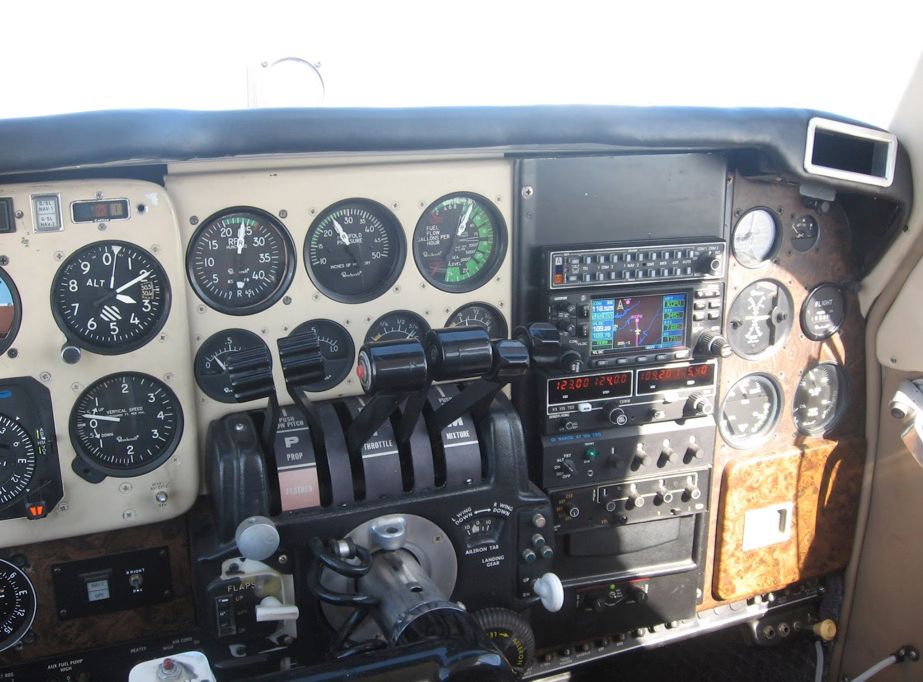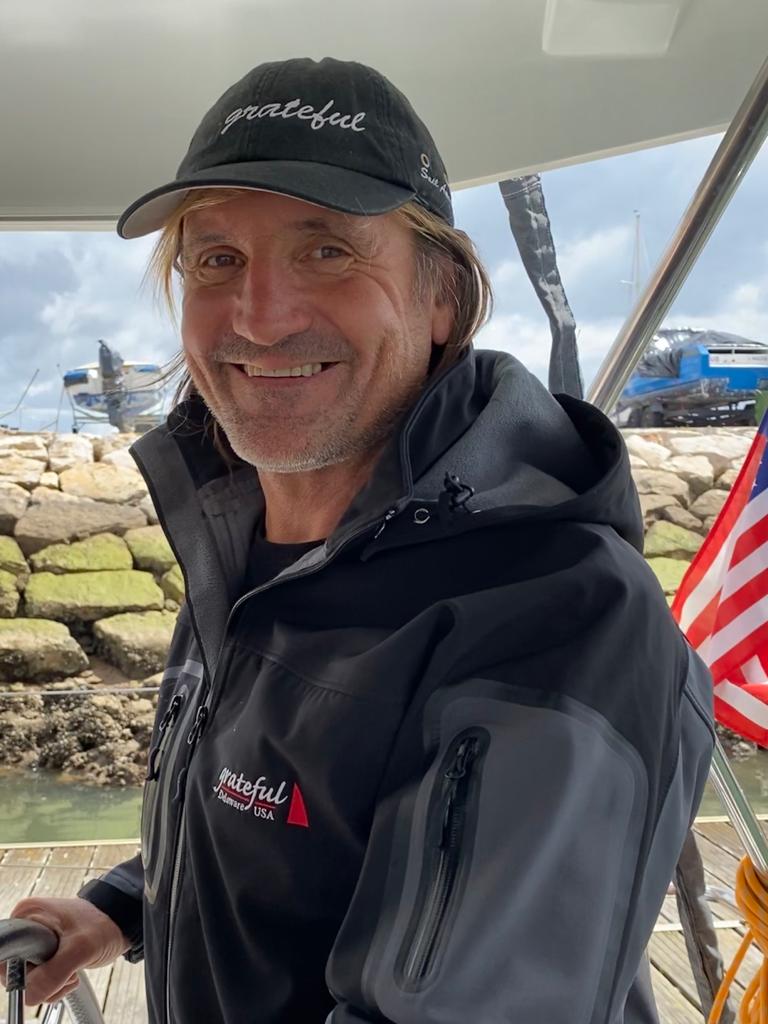Baja was my favorite. It turns out there’s a dirt strip on a remote island about 1/2 way down the Baja peninsula. When the south swells come every Fall, they wrap around the south point creating one of the most epic surf spots in the Eastern Pacific. I made that over-water run in the Baron 18 times, camping out under the wing, with the waves just for me, three crew, and a few other lucky pilots.
Back to the story…
While the more conservative would perhaps deviate just to the north a bit and follow Interstate 80 back to Hayward — which to a pilot can be considered a continuous runway all the way to Tahoe — I was feeling confident having just scaled the highest peak of the continent, Mount Whitney at 14,000’, twice in the past 72 hours. But now, the only real decision I had to make was to follow protocols and get this 3,600-pound bird headed in the right direction, then feather the dead engine, and find a suitable place to land.
I had practiced feathering every other week for the past 2 years. I knew what to do: identify, confirm, then react. This can be one of the deadliest moments of any pilot’s life. Normally, pilots have a lot of time to create and practice the false engine failure. A pilot picks a clear, calm day, with 6,000 to 10,000 feet of clearance, with airports within gliding range. Today wasn’t that day.
And to think, I was always a conservative pilot too. I recall flying with the family, fully loaded at the airport, following my ‘Rule of Three’ — my superstitious side safety tactic — scuttling a flight the day we were to head up to Tahoe for Thanksgiving:
1. Hanger door stuck.
2. Fuel stop cock not functioning properly.
3. Battery low.
I decided. We’ll fly another day. The Rule of Three.
In the back of my mind, the scenario that was presently unfolding was a bit too familiar. I knew very well that sometimes failure does occur, and that things don’t always go as planned. But now, I needed to make the first maneuver: a 180, on one engine, in the dark, over very hostile terrain with only 2,000 feet of clearance — a turn will cost hundreds of precious feet in elevation, with every second counting.
I set the crab angle at 3 degrees, and turned into the live engine. My instrument flight training was critical at this moment. Glued to the gauges, I began rolling out exactly on the heading that would lower my altitude the quickest. Having performed this task numerous times, I kept telling myself, “Just fly the plane. Keep the speed up. Keep the nose down. Fly the plane. Fly the plane.“
A dead engine has to be stopped, as the windmilling prop can cause a similar drag to a disc of the same size. The feathering process usually works best at very low air speeds. But, as every twin pilot knows, low speeds, one engine, and the extra lift and twist that an engine causes on the airframe, the next few moments are critical. One error can instantly result in a snap roll to death. There is no room for error.
I slowed to blue line around 105 knots, safe engine airspeed — the speed at which there is still rudder and aileron authority. I re-identified the left engine as the failure, and then pulled the prop to full feather.
Done. The prop slowly twisted flat, in-line with the airflow as it slowed, slowing down until it hit vibrational speed. It is at this point where the rotation and vibration of the prop feels as though the engine should rip apart from the wing. Suddenly, I looked again, and the prop had not stopped spinning. It had slowed down, but it hadn’t stopped spinning.
I watched my speed deteriorate. I tried to add more power back into the right engine to keep my precious altitude. The horrible vibrations of the slow spinning prop shook the entire plane violently. I re-engaged the feather lever, the prop spun back up, and I sat, confused, desperately searching my mind for another alternative.
Marc, my passenger, a realtor from the Bay Area sat quietly. He had a degree in mechanical engineering, so I knew he was painfully aware of the gravity of this situation. To his credit, and my benefit, he stayed calm as the nightmare began to unfold.
I called NorCal center and notified them of our condition.
“November 1 2 niner Quebec, say intentions, would you like to declare an emergency?”
“Yes, but can you please prompt me? I really cannot be distracted to find the form.”
“Of course.” They responded.
“Color: white w blue stripes
Fuel on board: 4 hours”
And so on. Then came the part in aviation cadence that always feels weird to answer:
“Souls on board?”
“Two”
As I delivered my response, l looked at Marc, who had only been in a small plane once before, headphones on, sweaty hands on his lap, his eyes white as the snow below. He looked at me with the obvious question, “Really?”
I can only imagine how he felt about being classified as a ‘soul’ at this moment.
I was extremely clear, concise and polite. The controller was calling out to me alternative airports as we continued. I noted the info but did not commit.
Emergency declared. All airspace was now mine.
Meanwhile, the prop kept spinning…OMG, WTF.
A year prior, I had installed these vortex generators on the leading edge of the wings. These small metal fins — about 1” long and 1/4” high — create a tornado-like airstream along the top surface of the wing, a suction effect that allows a pilot to lower control speeds by up to 10 knots. Ideal for getting into small airstrips, making a better wing for slow flights. Yes, the Baron 55 was a very capable aircraft. But these vortex generators might just be my chance. My mind was racing.
I slowed the plane, pulling back the right engine to eliminate adverse yaw, while lifting the nose to below ‘red-line’ of 81 knots — a safe speed only if both engines are producing equal power.





No comments